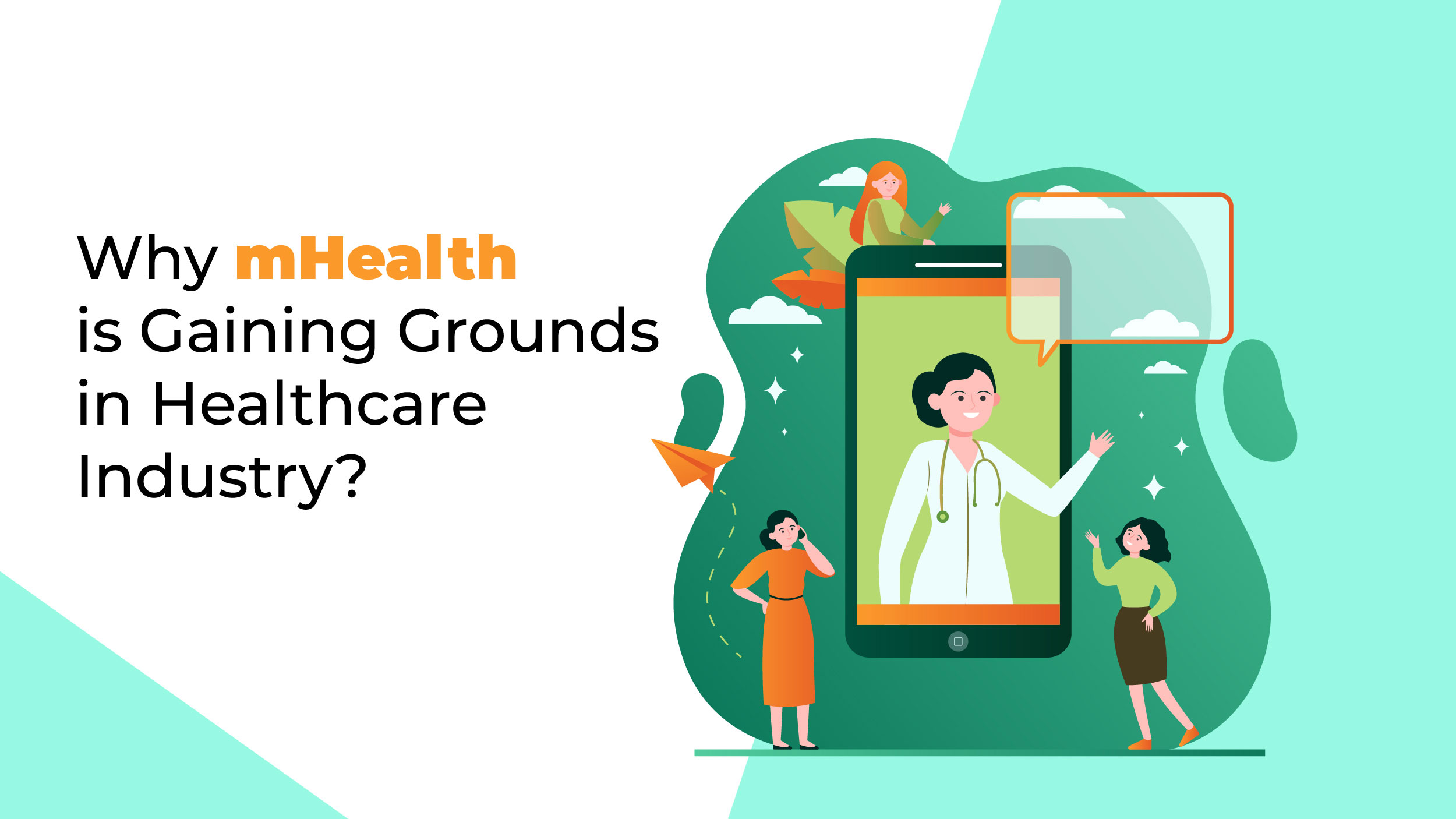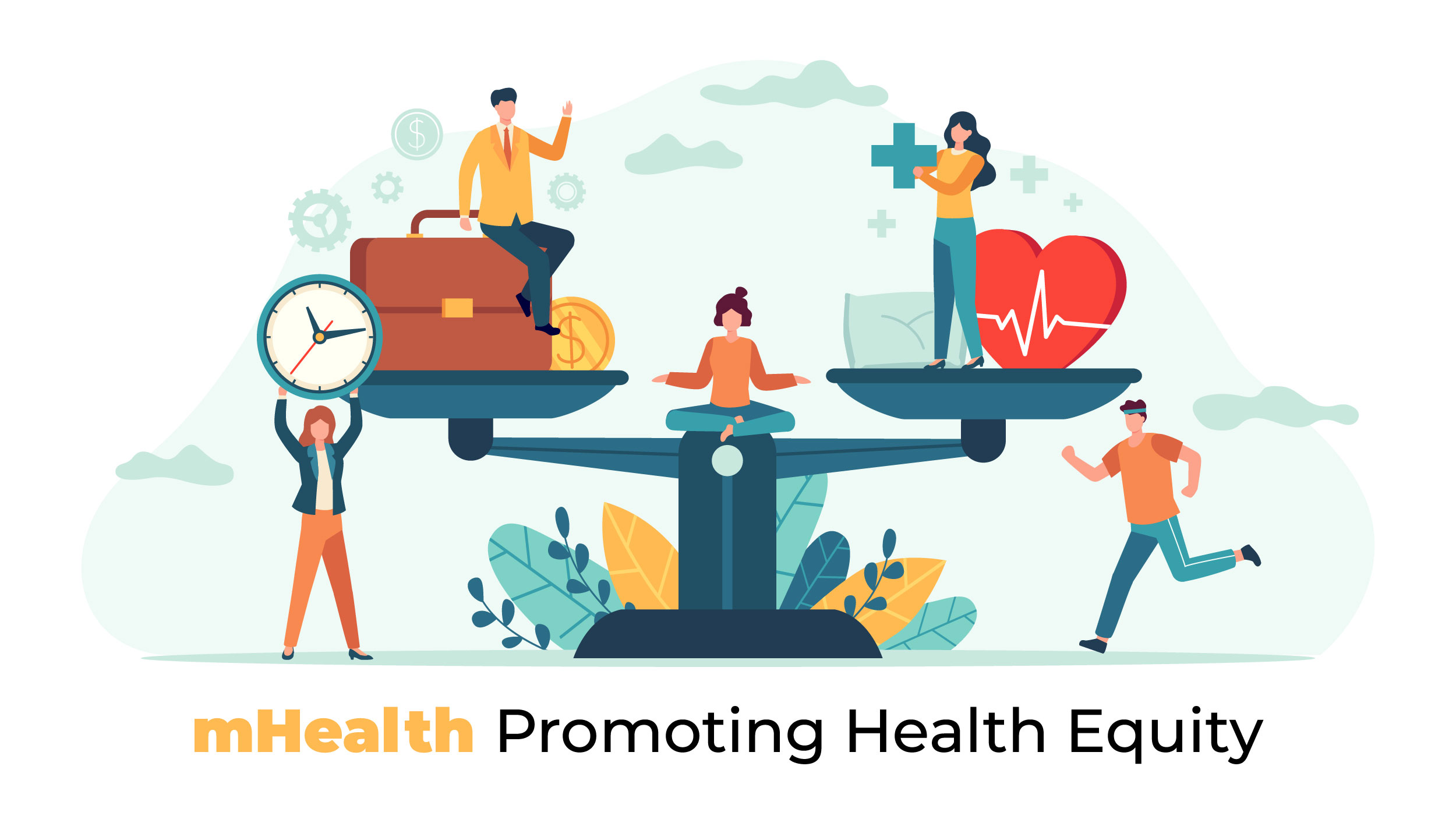Mobile health (m-Health) has been heralded as the most innovative and enabling area for global digital healthcare transformation for nearly two decades. However, with the advent and dominance of smartphones, as well as the reorientation of the concept toward the exclusivity of global smartphone application markets and services, this profound vision has become a fleeting view.
According to Pew Research Center, approximately one in every five adults in the United States owned a wearable fitness tracker or smartwatch as of 2020. Since these devices keep so many people connected, it’s only natural that mobile health apps are being used to supplement how healthcare is delivered today. It is likely that mHealth applications will continue to evolve in tandem with patients’ expectations.
What is mHealth?
This rapidly emerging sector, also known as mHealth, is a method of providing healthcare support and intervention using mobile technology such as wearables, tablets, and smartphones. Although mHealth can send data to nearly any mobile device, smartphones are currently the most popular.
mHealth refers to a variety of healthcare interventions that are available as clinical and non-clinical tools. For example, numerous smartphone apps can be downloaded to assist users in reaching fitness goals, monitoring sleep, and counting calories. Other methods, such as scheduling doctor appointments over the phone or via Skype, supplement the traditional healthcare system.
According to a labor market analysis, the United States will need to hire 2.3 million more providers by 2025 to meet the needs of the aging baby boomers. Rural areas are experiencing even more severe shortages as smaller hospitals close or merge with those in major cities. Meanwhile, people in rural areas are more likely to have low incomes, be older, and suffer from chronic illnesses.
mHealth enables providers to conduct virtual visits and provide early-stage interventions for these people and many others. This can be part of a global solution to provide care to populations who would otherwise lack access to necessary services, such as those in developing countries. According to World Economic Forum data, nearly 6 million people die in developing countries each year because they cannot access necessary medical care.
Why mHealth is Gaining Grounds in Healthcare Industry?

Mobile Health, or mHealth, has emerged as a powerful tool for transforming the healthcare landscape by leveraging the ubiquity and accessibility of mobile devices. mHealth is empowering individuals, bridging healthcare gaps, and revolutionizing healthcare delivery by leveraging the potential of smartphones, wearables, and other mobile technologies.
Enhancing Access to Healthcare
The ability of mHealth to improve access to healthcare services is one of its primary benefits. Mobile technologies have bridged the geographical gap between patients and healthcare providers in remote and underserved areas.
Individuals can receive medical advice and diagnoses, as well as remote monitoring for chronic conditions, through telemedicine and virtual consultations. This improved access to healthcare can save lives, especially for those with limited mobility or who live in remote areas with limited healthcare infrastructure.
Empowering Individuals in Self-Care
Individuals can now take control of their own health thanks to mHealth applications and wearable devices. People can use mobile apps to monitor their vital signs, track fitness activities, manage chronic conditions, and live a healthy lifestyle.
These apps provide real-time feedback, personalized recommendations, and medication schedule reminders. mHealth promotes proactive and preventive measures by involving individuals in their own healthcare, resulting in improved overall health outcomes.
Remote Patient Monitoring (RPM)
mHealth has transformed remote patient monitoring (RPM), enabling healthcare providers to monitor patients’ health status outside of traditional healthcare settings. Wearable devices with sensors can continuously monitor vital signs such as heart rate, blood pressure, and glucose levels and transmit the information to healthcare professionals in real-time. This technology is especially beneficial for people who have chronic conditions because it allows for early detection of potential complications and timely interventions, reducing hospital readmissions and improving patient outcomes.
Health Education and Awareness
mHealth is critical for health education and awareness. Mobile applications enable individuals to stay informed about various medical conditions, symptoms, and treatments by providing easy access to a wealth of health information.
mHealth apps also provide personalized health tips, wellness programs, and reminders for preventive screenings or vaccinations. By promoting health literacy, mHealth enables individuals to make informed decisions about their health, resulting in a healthier society as a whole.
Disease Surveillance and Outbreak Management
mHealth has proven to be useful in disease surveillance and outbreak management during epidemics or public health emergencies. Mobile apps and platforms enable real-time data collection, allowing healthcare officials to track disease spread, monitor symptoms, and implement timely interventions.
Furthermore, mHealth applications provide public health agencies with a direct channel to communicate critical information, disseminate preventive measures, and improve community emergency preparedness.
mHealth Promoting Health Equity

It no longer makes sense that in a world as advanced and capable as ours, health care is still unevenly distributed around the world. By lowering the cost of care and providing more preventive measures, mobile health is helping to close this gap. Many people are forced to seek care that treats rather than prevents disease because they live in remote areas or cannot afford a traditional office visit.
mHealth addresses this by putting critical information in the hands of patients. Apps and mobile visits improve response time, and patients are more likely to care for themselves diligently as they gain knowledge about their bodies by viewing their health data for themselves. One of the first steps toward prevention is self-care, which includes healthy eating and exercise.
Conclusively
mHealth has emerged as a transformative force in healthcare, revolutionizing the delivery and reception of healthcare services. mHealth has the potential to address healthcare challenges and improve health outcomes globally due to its ability to improve access, empower individuals, enable remote patient monitoring, improve health education, and facilitate disease surveillance.
To maintain trust and protect patient data, mHealth implementations must ensure privacy, security, and regulatory compliance. As technology advances, taking advantage of the opportunities provided by mHealth will undoubtedly reshape the future of healthcare, making it more patient-centered, efficient, and accessible to all.




